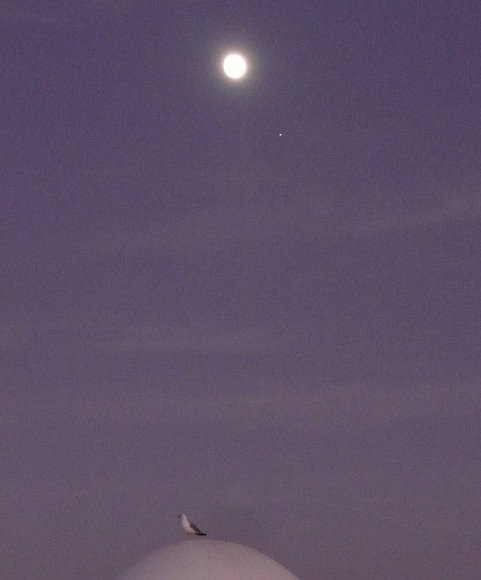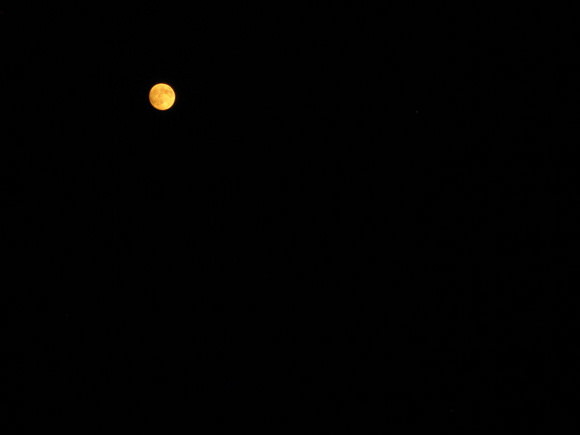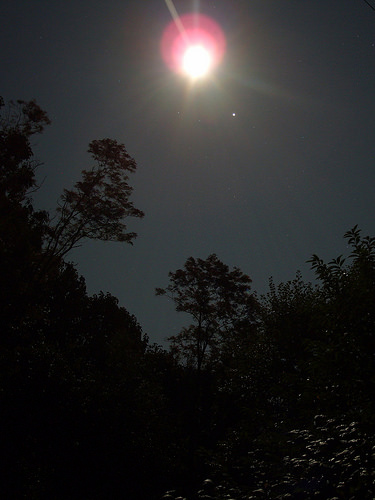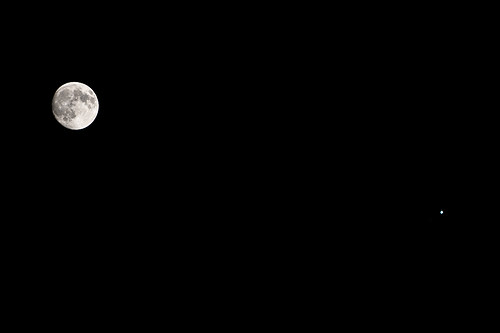[/caption]
Anyone ask you that question this morning? Jupiter was only 3 degrees from the Moon last night, making a pretty (and bright!) conjuction. I put out a call on Twitter last night for pictures of the event, and here are a few that were shared. Above is one taken by Kevin Jung in Grand Rapids, Michigan USA. Click the picture for more of Kevin’s images. Also, if you looked at Jupiter with a telescope last night (Sept 2) at 4:43 to 6:29 Universal Time (12:43 a.m. to 2:29 a.m. Eastern Daylight Time) you may have also noticed something was missing: Jupiter’s moons were hiding! Ganymede and Europa passed in front of the giant planet, while Io and Callisto will passed behind Jupiter (from our point of view) making it nearly impossible to visually detect any moons around Jupiter. Our own Brian Ventrudo explains all on his site One Minute Astronomer. And here’s some more images from the conjuction:

Here’s a nice shot from Daniel Fischer (a.k.a. cosmos4u on Twitter) who took this image while in Portugal. Check out Daniel’s website, too, for lots of space and astronomy info.

This one is from Emily Lakdawalla, blogger for the Planetary Society. If you’re wondering why the Moon looks so orange in this picture, Emily is currently looking through the smokey skies of the “Station Fire” out in southern California.

This is a pretty view of the conjuction from David Woods, who took this image from the mountains of Virginia, USA. Click the image to see more of David’s handiwork.
Thanks for sharing your pictures


Saw it last night. Very pretty. Too bad the telephoto zoom I had ordered did not arrive yesterday.
Got a great look at Jupiter last night with NO moons visible in my 4.25″ reflector. This is quite an unusual observation for Jupiter. I’ve been lucky to see this unusual event twice before over the past 30 some years. I always wondered if Galileo only had one look at Jupiter with his scope and it turned out that no moons were visible, who would be the first to see these ‘Galilean satellites’ ?
Hopefully, by the time of the next ‘moonless’ Jupiter apparition in 2019, I’ll have access to a larger telescope to better track shadows, transits, occultations and other mutual phenomena of the Galilean moons. Thanks for the heads up for this event, Nancy. Quite a sight, especially with the nearly full moon nearby.
I’ve been watching Jupiter since August – it’s out right now with the moon close by – I have an excellent view, if only the light pollution were much less…..
Not often when baseball and astronomy cross, but I was watching the Phillies-Giants game the other night and they showed the usually shot of the near full moon (which looks great in HD), but then they showed Jupiter to the right. At first I thought “hey that’s cool” but then they zoomed in and you could see banding on Jupiter and 3 of the Galilean satellites and my jaw dropped. Anyone have an idea what the resolution is on a TV HD camera?